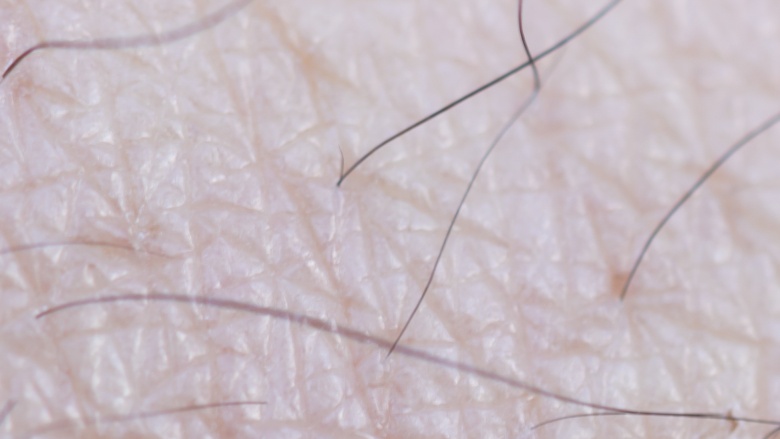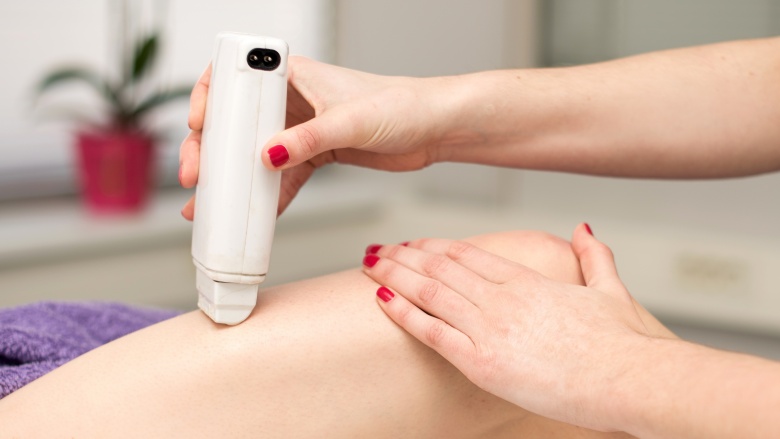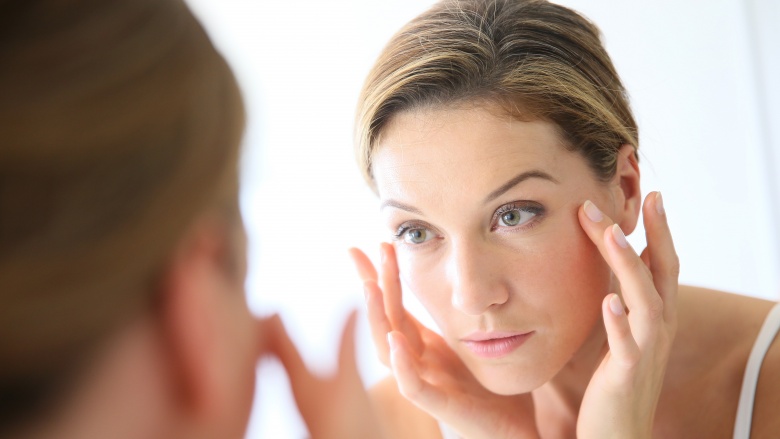What Every Woman Should Know About Laser Hair Removal
I'm going to let y'all in on a little secret of mine. I. Am. HAIRY. I come from a long line of hairy women. Growing up, if one of my sisters took an incredibly long time in the bathroom, we knew it's because they were likely de-Sasquatching. Yes, we created a name for it.
The Fung women are not alone in this struggle with excess hair. About 20 million American women remove facial hair at least once a week, according to research conducted in the late 90s by pharmaceutical company Bristol-Myers Squibb. Fortunately, there are several options to remove unwanted hair — ranging from hair removal creams to waxing. From one hairy woman to another, you know removal creams range from stinky wastes of time to smelly semi-useful products. Shaving takes time every day and can cause razor bumps and ingrown hairs. And waxing, tweezing, or threading is cruel and unusual punishment.
So what can a hairy gal do to get that silky smooth hairless skin? One viable option might be laser hair removal. But before you go in search of your cousin's lightsaber, there are a few things you should know.
How it's done
Laser hair removal (LHR) is a medical procedure that uses a pulsating beam of light to remove unwanted hair. The laser goes through the skin to the hair follicle to stunt future growth.
"The goal of laser hair removal is to target the melanin in the hair follicle, which is the pigment in the hair follicle," says Sailesh Konda, MD, a dermatologist and assistant professor at the University of Florida College of Medicine. "The energy in the laser builds up to coagulate hair follicles so they are unable to produce new hair."
Timing matters
So it sounds simple. You find someone to zap your hair at the root and no more hair, right? Well, Dr. Konda says there are several factors to take into account in considering LHR, including when you should start.
"Hair grows in different phases. The growing phase — anagen — is the time that we want to effectively target," he says.
Hair growth occurs in a three-phase cycle — anagen (growth), telogen (dormant), and catagen (death). When hair is in the telogen phase, the laser cannot identify the hair. Unfortunately, hair growth doesn't occur all at once. That's why Dr. Konda says it's important to space out treatment to every four to six weeks.
"For the average patient, we recommend four to six treatments at least four to six weeks apart. That usually gets rid of the majority of hair," he said.
Skin color affects your treatment
It shouldn't be much of a surprise since melanin is involved, but women of darker skin color should be aware that their color might impact their hair removal outcomes. Dr. Konda explains the reason darker skinned people might have difficulty with hair removal is the laser can't differentiate between the pigment in the skin and the pigment in the hair follicles. With the laser unable to distinguish between the hair follicle pigments and the skin pigments, patients can experience side effects. However, he says "newer laser technology can target pigment in hair follicles while minimizing any targeting of pigment in surrounding skin in darker skin types."
Side effects can include blistering, cold sores, swelling, scarring and darkening of the skin. Tanning and tanning spray also impact the efficacy of the hair removal process. It's recommended to wait several weeks after a tanning session to allow the skin to go back to its natural color.
Hair color makes a difference
When it comes to LHR, blondes don't have all the fun. Women — or men — with lighter colored hair may not be suited for laser hair removal. "Since laser hair removal targets the pigment in the hair follicle, the less pigment there is, the harder it will be for the laser to find the hair," Dr. Konda says.
Not all blondes need to worry. Dr. Konda says the concern is more for people with extremely fair hair like those with white, gray, or pale blonde hair. "When I see a patient come in with white hair or pale colored hair I'll tell them 'you're wasting your money don't get laser hair removal.' In those cases, electrolysis would be better," he says.
Dr. Konda says many physicians treat women with blonde hair on a case-by-case basis. He explains that when discussing LHR with patients there is an ideal candidate in mind. "An ideal candidate is a person with darker hair on a fairer complexion," he says. "They're 'ideal' because the laser is able to effectively target the darker brown or black hair against the contrasts of the fairer complexion."
Hair removal isn't permanent
It is important to note that LHR is permanent hair reduction, not permanent hair removal. Some patients do experience breakthrough hair growth after the treatment series, Dr. Konda says.
The only hair removal process approved by the US Food and Drug Administration (FDA) as permanent hair removal is electrolysis. However, Dr. Konda warns that electrolysis might not be the best option. "Electrolysis destroys the hair follicles one by one. It's painful and intensive for the patient and practitioner. That is why laser hair removal is preferred."
Though laser hair removal isn't permanent, studies do show it can be highly effective. A small study published earlier this year in the Journal of Cosmetic Laser Therapy found 90 percent median reduction of hair in Chinese women who used a certain type of laser hair removal.
The type of laser matters
Though there is an "ideal candidate" — dark hair and fair skin — the industry now has a range of LHR machines to treat varying hair and skin colors. There are four common hair-removal lasers. Dr. Konda recommends consulting a dermatologist to decide what laser would work best for your skin and hair.
For darker skin, there is the Nd: YAG Laser. It is ideal of darker skin hues because it has weaker melanin absorption. To remove the hair, YAG sends out long wavelengths to zap the hair. Because YAG absorbs less melanin, it requires more treatment and has been found to be less effective for women with fine hair.
Those with an olive tone, Alexandrite Laser has been found to be effective. Similar to the YAG Laser, Alexandrite transmits a long wavelength. While effective for women of varying complexions, Alexandrite has been found to cause scarring.
The Diode Laser, which was used in the hair reduction study in China, is a newer product that is ideal for lighter skinned women. It uses a mix of short and long wavelengths to attack the hair follicles. Because Diode is so new, there is little known about its long-term effects.
For very light skin, women can turn to the Ruby Laser system. It's one of the oldest systems around. It has a higher melanin absorption rate than other options. However, patients report discoloration after treatment.
Go to a professional
It should go without saying, but when it comes to any sort of skin treatment, see a professional. Of course, dermatologists like Dr. Konda recommend seeing a dermatologist. Dermatologists go through medical school, at least three years of post-graduate hands-on training and are required to regularly take continuing education courses to stay updated on advancements in the field.
But it's important to note, while seeing a doctor who specializes in hair removal might be ideal, it's also going to cost you. LHR is not covered by health insurance, so you'll be paying out of pocket. According to the American Society of Plastic Surgeons (yes, they perform LHR too), the average cost of laser hair removal was $289 per session in 2014. That's a national average. The price varies from provider to provider.
Dermatologists and plastic surgeons aren't the only ones offering this service. Many laser hair removal businesses strictly use aestheticians. Dr. Konda says for the most part, the aestheticians are competent to perform the procedure, but cautions LHR is a very technical procedure and requires knowledge and care. "Dermatologists pioneered the field and many of the equipment. We know the physics behind it. It's not as simple as turning on a machine and saying, 'Oh' I'll just try this out — maybe it works, maybe it doesn't," he says.
He adds: "With aestheticians using the lasers, usually the company will send a rep out and the aesthetician will have a few training sessions. They'll do fine, but if there is a complication, that's when having the dermatologist, who is trained, is beneficial."
Recently, home laser hair removal products have come to the market. Though seemingly cost effective, these devices only provide minimal hair reduction, according to the Mayo Clinic. Also, the FDA considers these items to be cosmetic, not medical, which means they are not subject to the higher level scrutiny of medical devices.
Before you get laser, you should know this
Like all medical procedures, laser hair has side effects including redness and skin irritation, skin darkening or lightening, blisters, or burns. In very rare cases, some patients experience excessive hair growth after treatment. Dr. Konda says the reason for this hair growth is unknown.
Those planning to start laser hair removal should not wax, pluck or thread hair within three weeks of the treatment. This is because waxing or plucking removes the entire hair shaft, not just the surface hair. Patients should shave the area the night before or morning of the procedure so the laser can more effectively target the hairs.
Some patients experience mild pain during the procedure, which Dr. Konda likens to popping a rubber band. If a patient is sensitive to the pain numbing agents are available at dermatologists offices, as well as ice packs and other cooling devices.








